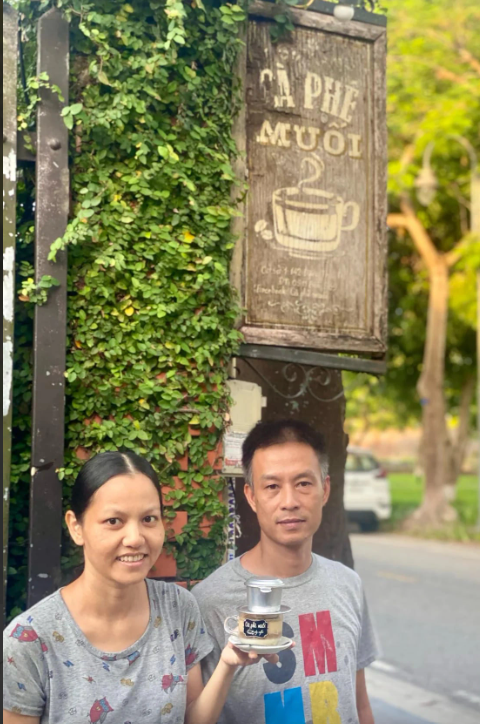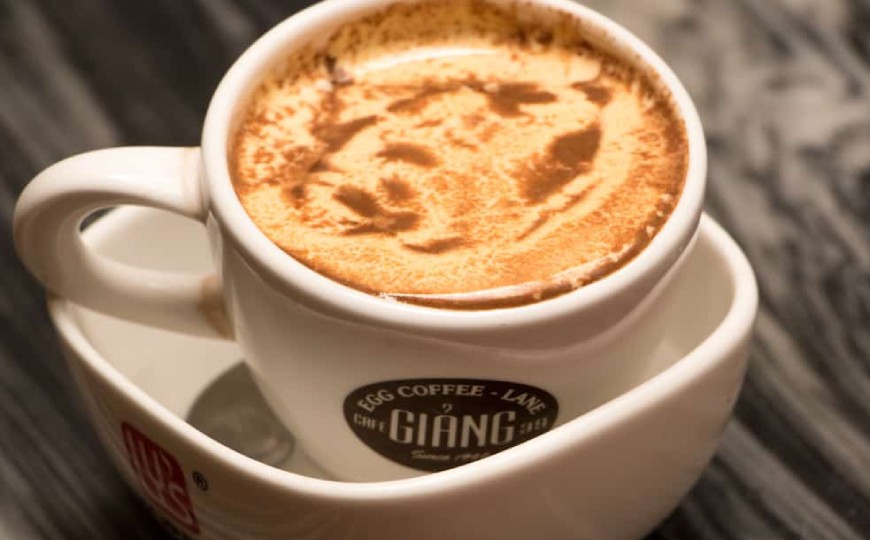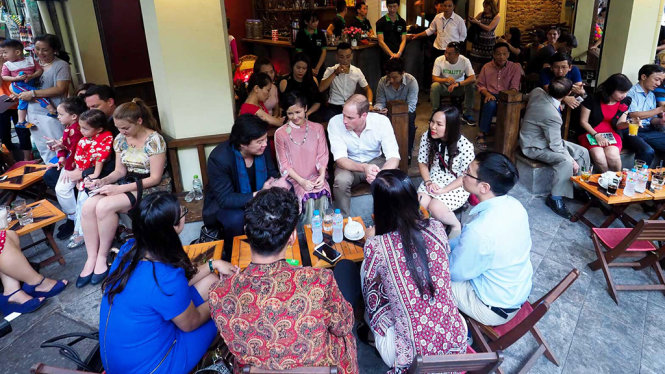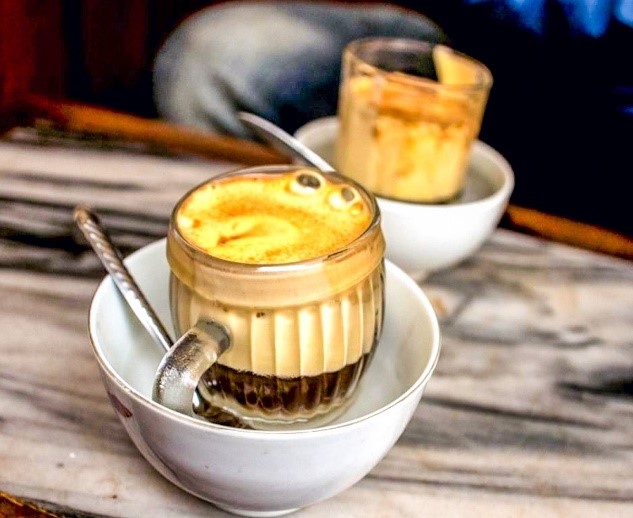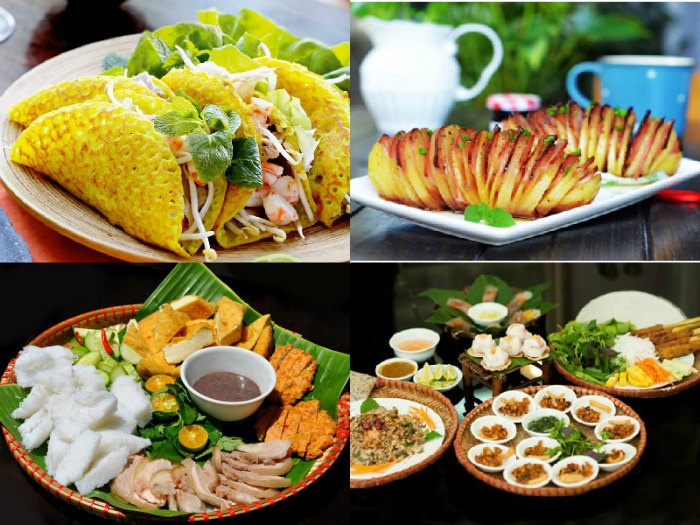VIETNAM SPECIALTY SALT COFFEE HUE VIETNAM
It’s become a popular beverage trend on social media platforms like TikTok in recent months – how to customize your Starbucks order so it tastes like a Vietnamese iced coffee.
And increasingly, some posters are including tips on how to request a specialized version of this sweet caffeinated beverage those in the know swear by – salt coffee, or ca phe muoi.
A small, no-frills café in Vietnam’s historical city of Hue is widely credited with inventing this now-popular beverage, which is made by adding sweetened condensed milk to a base of Vietnamese coffee. The mixture is topped with salted cream and it’s served hot or iced.
“We created salt coffee in 2010 when we opened our first Ca Phe Muoi coffee shop at 10 Nguyen Luong Bang Street,” co-owners Ho Thi Thanh Huong and Tran Nguyen Huu Phong tell CNN Travel via email.
“This combination of condensed milk, salt and black coffee (creates a) creamy mixture that softens the bitterness of the coffee and balances the sweetness of the condensed milk.”
The name of the cafe and now-famous drink is telling. “Ca phe” means coffee and “muoi” means salt in Vietnamese.
“We hoped this name would attract people because they always think that black coffee is only with sugar or milk… we thought that if we wanted to open a coffee shop we had to make (it a little different to) attract the customers, then the salt coffee taste would keep them with us,” says the couple.
The strategy worked. Curious locals and tourists began to visit – and they liked what they were drinking.
“Hue people had a habit of drinking black coffee with sugar or condensed milk, so salty coffee was (considered) a strange drink,” they add.
“We were really grateful to our first customers, they were willing to try this strange drink, and gave us feedback so we quickly perfected the flavors.”
Before long, salt coffee became known as a specialty drink representing historic Hue and cafes around Vietnam began serving it as well.
“After the Covid-years, salt coffee seems to be a trend across Vietnam,” say the Ca Phe Muoi founders.
“In Hue, salt coffee became a daily drink like black coffee or white coffee so this trend brings more change to our business.”
Today, the café bottles its salt coffee to sell in other Vietnamese cities as well.
Though the name might turn people off, the flavors really do work. The sweetened milk and cream balances the bitterness of the coffee, and salt heightens the sweetness – much like how a little bit of salt in salted caramel makes the caramel flavors more prominent.
Even Starbucks’ branches in Vietnam have joined the salt coffee wave, launching their own version of ca phe muoi in May this year.
Vietnam isn’t the only country that adds salt to its coffee. In 2023, a Bon Appetit article suggested we should all be adding it to our brews to cut some of the bitterness and heighten the flavors, noting the tradition goes back hundreds of years in countries like Turkey, Hungary and Siberia.
Growing global interest in Vietnamese coffee
Vietnam, which primarily grows robusta beans, is the world’s second-largest exporter of coffee after Brazil. The country’s coffee exports have already hit $2.9 billion in the first five months of this year, marking a 43.9% increase over the same period last year, according to the International Trade Council.
That salt coffee has become ubiquitous around cafes in Hue and a common option on menus across Vietnam nowadays shouldn’t come as much of a surprise.
First introduced by French colonists in the 1850s, coffee is extremely popular throughout the country. Coffee outlets range from hole-in-the-wall counters with plastic stools on the sidewalk, to sleek, contemporary cafes with roasters on the premises. (Read more about Vietnam’s vibrant coffee culture here.)
Traditional Vietnamese coffee is brewed in a phin – a metal, filtered brewing device – that’s placed over a cup or pot. Many people prefer to stir a tablespoon or two of sweetened condensed milk into the strong brew.
And salt coffee is just one of several distinctive Vietnamese coffee drinks that might raise a few eyebrows among those who’ve yet to sample them.
And then there’s coconut coffee – ca phe cot dua – which features coffee blended with coconut milk and ice – a cold treat with a tropical kick.
In fruit shake coffee – sinh to ca phe – coffee is combined with banana or avocado to produce a smoothie.
And finally, there’s yogurt coffee – sua chua ca phe – which features black coffee drizzled onto creamy Vietnamese yogurt, another French legacy.
According to a report by global market research agency Mintel released in 2023, consumers outside Asia are increasingly interested in these novel coffee experiences and flavors. Some 71% of Gen Z consumers interviewed by Mintel in the US said that they were interested in trying Asian-inspired coffee drinks such as Vietnamese coffee.
In the US, 7 Leaves Café, a café chain selling Vietnamese drinks, has expanded to more than 40 branches across the country after opening its first café in California in 2011.
Meanwhile, independent Vietnamese cafes have been popping up around the country, with Phin Ca Phe in Seattle and Càphê Roasters in Philadelphia among those offering versions of salt coffee. Across the Atlantic in London, venues like Caphe House offer various Vietnamese coffee drinks including ca phe trung.
Back in Hue, Huong and Phong say the majority of their patrons order salt coffee, though there are other items on the menu such as chanh xi muoi, a special house-made lemonade with salted lemon jam. And though they serve both iced and hot versions of salt coffee, they think the former is the tastiest option.
The couple now has a second, bigger branch of Ca Phe Muoi just a stone’s throw away from the palace and the moat of the ancient Hue Imperial City.
“We feel joy and a little pride because we made a drink that is loved by many people and it is even considered a Hue specialty,” they say.
Source: CNN

